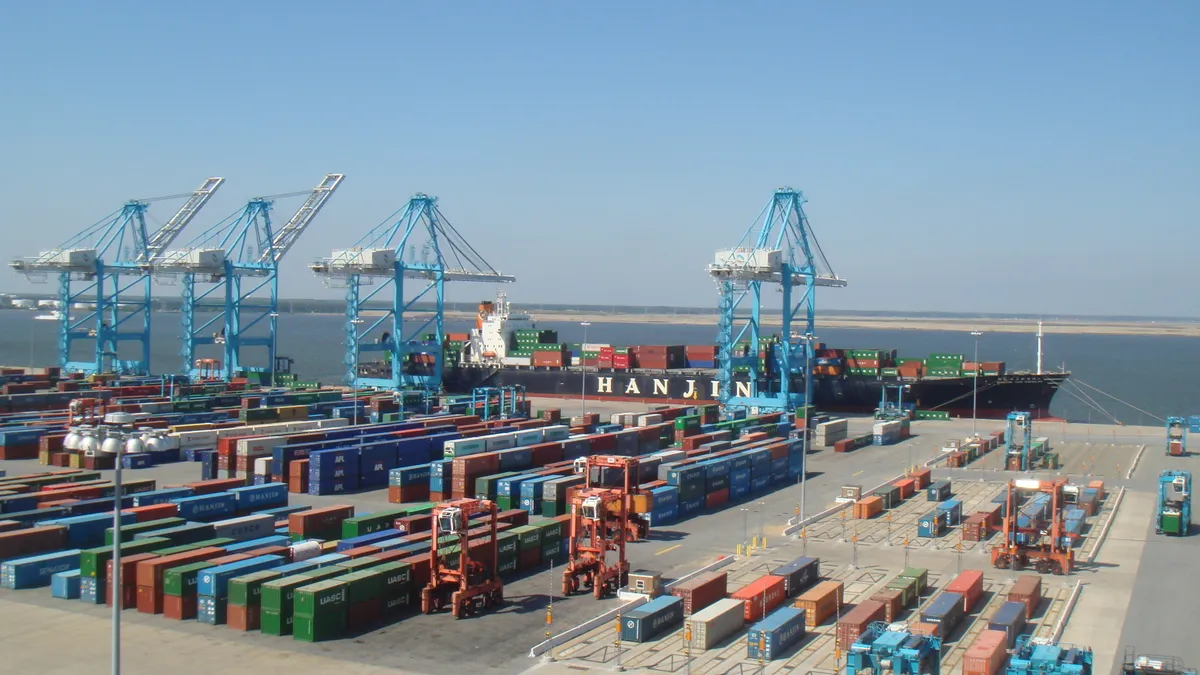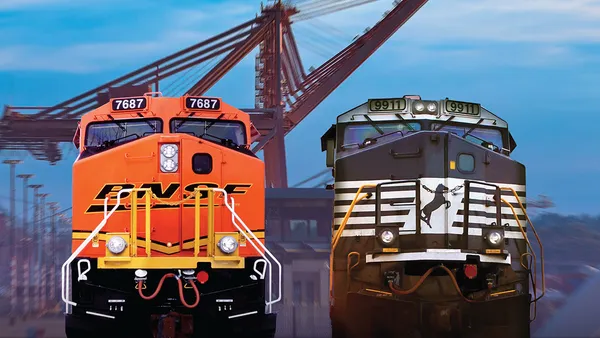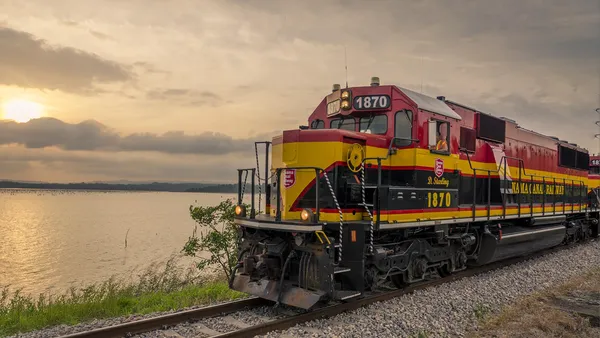Dive Brief:
- The Port of Virginia revealed plans to reconfigure and double the size of its on-dock rail yard to expand rail capacity at Norfolk International Terminals, using a $20 million federal transportation grant.
- The total cost of the project is $44 million and will be covered through a federal-state-port collaboration: $20 million from the U.S. Department of Transportation's 2020 Port Infrastructure Development Discretionary Grants Program, $16.7 million from the Virginia Department of Rail and Public Transportation's Rail Enhancement Fund, and $7.4 million provided by the port.
- "The amount of cargo we move by rail, mainly to the Midwest, is growing and is important to the users of this port and our overall success," John F. Reinhart, CEO and executive director of the Virginia Port Authority, said in a statement.
Dive Insight:
As Norfolk International Terminals undergoes $450 million in capacity expansion to increase throughput by 400,000 containers, the move to double its rail yard size aims to meet the growing demand and forecasts for future intermodal volume, executives said.
"Our goal is to have 40 percent of our total container volume move by rail," Reinhart said in the release, particularly to serve shippers in inland markets, such as the Midwest and Ohio Valley. The port's current rail service transports 34% of its container volume.
The lion's share of the rail expansion project will focus on constructing 10,700 feet of new track within the terminal, consisting of two bundles of four tracks each. The existing capacity of the current rail operation (368,000 containers annually) will double, allowing for more carriers to transport more goods.
"As the ships/cargo volumes grow, we anticipate existing users will expand their rail volumes," Joseph Harris, Port of Virginia's senior director of media relations and spokesperson, said in an email. Growing overall rail volume allows for new shippers to work with the port to efficiently deliver their products, Harris added.
The port's focus on building up intermodal infrastructure comes as rail carriers look to court shippers and capitalize on a new wave of intermodal freight, trying to entice shippers to switch away from trucking. High trucking rates (with no clear signs of falling) have propelled some shippers to look elsewhere — creating an opening for rail. Earnings calls from CSX and Union Pacific last week extensively discussed their goals for intermodal volume growth and the technology and plans it will take to make it happen.
The port anticipates an increase in e-commerce cargo, partly based on investments Amazon is making near the port and in the state. "The goal is to be prepared for any type of cargo or shifts in the industry and be able to immediately provide real value to these cargo owners," Harris said.
As a part of the expansion effort, two ship-to-shore container cranes are slated to arrive at the port in November and go into operation in early 2021, according to the press release.













